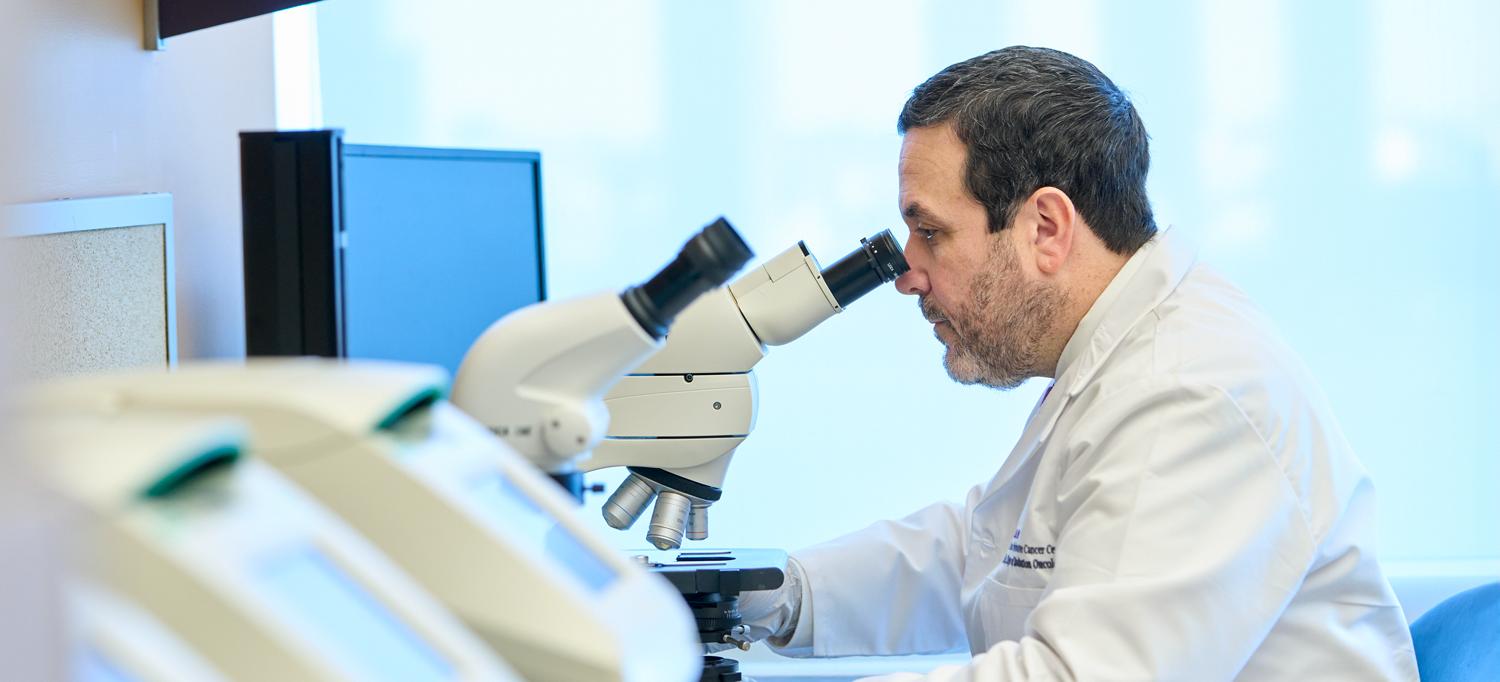
“We’re working to ensure that every patient has access to our clinical trials,” says Alec Kimmelman, MD, PhD, director of NYU Langone Health’s Perlmutter Cancer Center. “If you live in Brooklyn, Queens, or Long Island, you shouldn’t have to travel to Manhattan for that kind of innovative care.”
Credit: Juliana Thomas
Alec Kimmelman, MD, PhD, who was named director of the Laura and Isaac Perlmutter Cancer Center at NYU Langone Health in November 2023, brings uncommon experience to the job: he has a stellar record of leadership in both research and patient care. Dr. Kimmelman joined NYU Langone in 2016 as the Anita Steckler and Joseph Steckler Chair, Radiation Oncology, a role he retains. An internationally recognized expert on the biology of pancreatic cancer, he has identified critical metabolic pathways that enable the disease to grow and spread, pointing toward potential therapeutic targets. Here, Dr. Kimmelman discusses his vision for expanding treatments, advancing research, and enhancing care at the National Cancer Institute–designated center.
What are your primary goals for Perlmutter Cancer Center?
We have three priorities. The most basic is to expand access to top-flight cancer care throughout NYU Langone. When you walk into any of our sites, the services and treatment offerings should be identical. The second is to ensure every patient has access to our burgeoning portfolio of 192 open clinical trials. For many cancers lacking effective treatments, the best therapy available may be one that’s in the investigational stage. If you live in Brooklyn or Queens or on Long Island, you shouldn’t have to travel to Manhattan for that kind of innovative care. We’ve made progress toward this goal in recent years, but we’re still not done.
Our third priority is to expand our translational research—the kind that travels from the lab bench to the bedside and back again—so that we can benefit patients at NYU Langone and all over the world. We’re ramping up research centers to develop treatments and diagnostics for cancers of the lung, brain, spine, pancreas, breast, and skin.
You’ve noted that it’s a particularly exciting time to lead at an academic cancer center. Why?
The pace of scientific progress is astonishing. We’re going from the discovery of new molecular targets to medicines that treat patients more rapidly than ever. For example, a study last year led by our deputy director, Jeffrey Weber, MD, PhD, showed that a vaccine that trains the immune system to attack proteins unique to a patient’s cancer, when combined with an older class of immunotherapy called a checkpoint inhibitor, could dramatically reduce the recurrence of melanoma, a deadly form of skin cancer.
We’re seeing an explosion of investigational drugs aimed at neutralizing KRAS, mutant proteins that are among the main drivers of pancreatic, lung, colon, and blood cancers. For decades, KRAS has been a sort of holy grail in cancer research, but recently we’ve been able to target it.
In my own lab, we’re making headway in decoding pancreatic cancer, the third leading cause of cancer deaths. Our work focuses on how cancers use various fuel sources, known as tumor metabolism, and uncovering metabolic pathways that might prevent them from spreading.
How does being both a clinician and a researcher impact your leadership style?
As a clinician, I’ve taken care of cancer patients across the continuum, from early stage to end of life, getting a firsthand look at how difficult the journey can be. Cancer treatments, even if they’re successful, can cause serious and lasting side effects. The psychological journey can be equally challenging. This insight has made me realize in my role as a researcher how important it is not only to develop better therapies, but also to elevate the quality of our care.
How will you ensure that Perlmutter Cancer Center has the resources to fulfill your translational research goals?
We’re anticipating trying times for federal funding. So we’re embarking on a large philanthropic venture to tap alternative grant sources, including nonprofit foundations. In addition, we’re nurturing partnerships with pharmaceutical and biotech companies that are working to develop novel therapies and determine the best ways to deploy them. Of course, if our researchers have some breakthroughs of their own, royalties and intellectual property would be another valuable funding source.
Despite good news on the treatment front, a recent study found that global cancer rates are rising, especially among people under age 50. What can be done to curb this alarming trend?
We need more research to understand why this is happening and who is most at risk. People often ask, “Why can’t everyone just get a full-body MRI every year?” Putting cost and resources aside, these scans often do more harm than good, yielding ambiguous findings that require invasive and often unnecessary follow-up tests. Before we establish more aggressive screening protocols, let’s figure out who needs to be screened and the best way to screen them.
If full-body scans aren’t the answer, what is?
A better strategy than early detection is prevention. Some 30 to 50 percent of cancer cases could be avoided by taking a few simple lifestyle steps. First and foremost, stop smoking—stat! Smoking increases the risk for many cancers, not just lung cancer. Moderate your intake of alcohol, since consuming three or more drinks per day is linked to a variety of cancers. Obesity is another risk factor, so maintain a healthy weight and exercise regularly. And make sure your child or young adult is vaccinated against human papillomavirus (HPV), a sexually transmitted infection that is driving an epidemic of gynecologic malignancies and cancers of the tonsils and the larynx. There’s no guarantee that you’ll avoid cancer by following these guidelines, but you’ll certainly optimize your chances of staying healthy.

